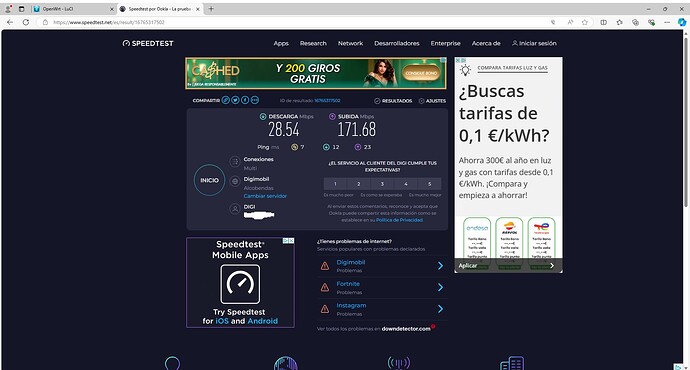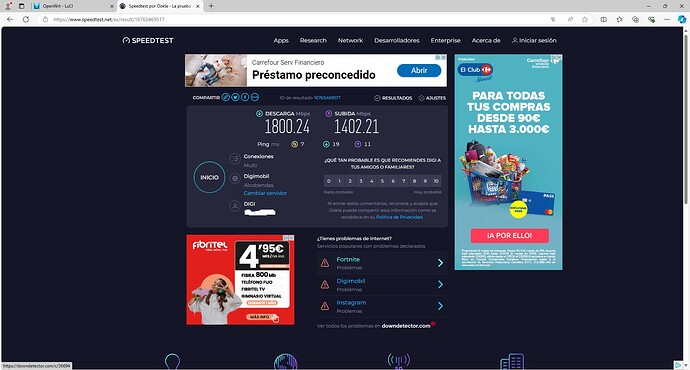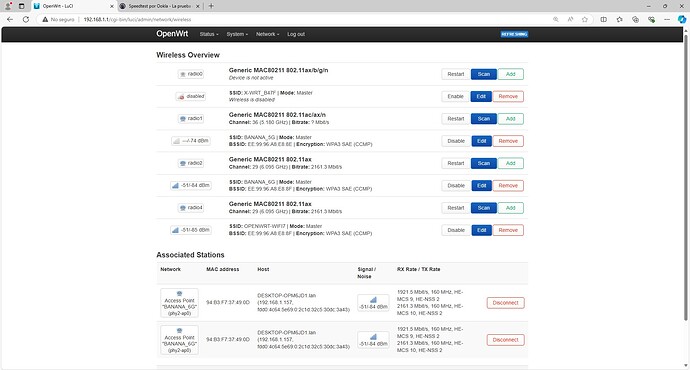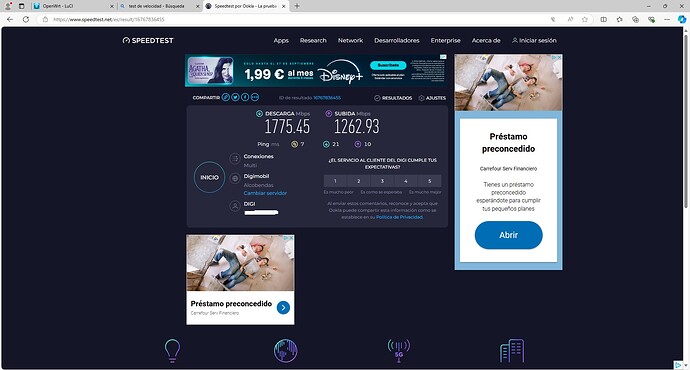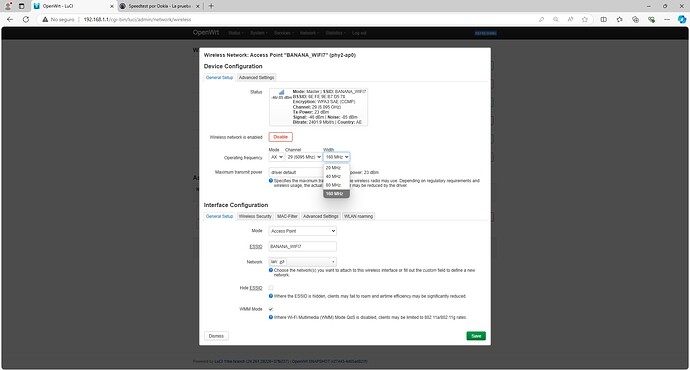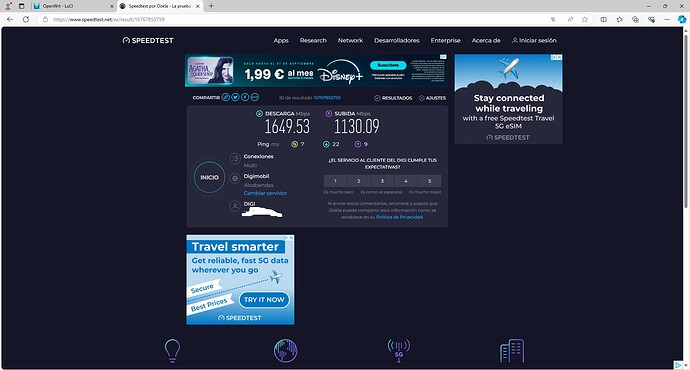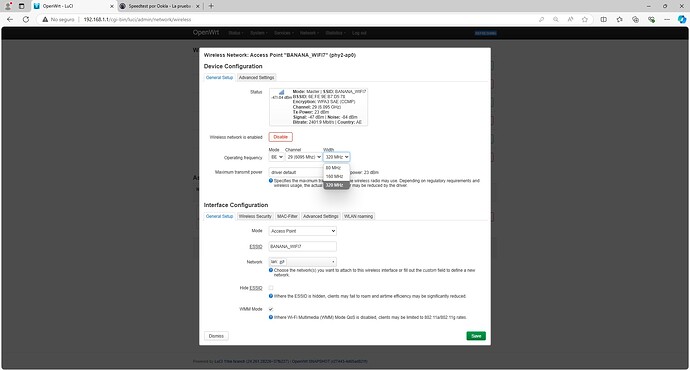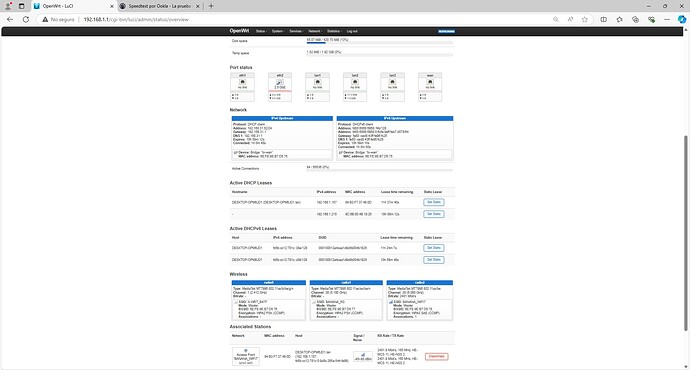Full agree with you, it’s a development board was never sold as a end consumer product
I don’t understand something about this modern world, why would MTK release a closed version of the driver if its final version will be open?
For MediaTek, “proprietary” drivers are their main drivers and the ones they provide to companies like Asus, Linksys, NETGEAR, etc.
“Open source” drivers are the ones they are FORCED to share with the Linux community because they are using their kernel or maybe they share them voluntarily. ![]()
The bottom line with drivers is that companies want the ”proprietary” drivers so most of the work goes into improving that garbage.
“Open source” drivers are the redheaded stepchild in this scenario.
That’s not to say they won’t work good but ”proprietary” drivers is going to get most of the love.
Good morning @espiro, he says he won’t write again but with a few words like the ones you mentioned, I totally agree with everything.
I’m still waiting for Sinovoip BPI Team Leader to appear once and for all and explain what he has sold us, unless he only wants to make money.
I still have all the messages exchanged with him on Aliexpress
Let’s see if he deigns and with his wisdom enlightens all of us fools who have not been able to understand his project
By the way, I would like to send you some very interesting things about people who are already there in private:
Kernel Version 6.6.51 at least they already have wifi 7, but the speeds are not correct. But at the user level it is an openwrt that you can work correctly since the banana pir r4 card is good.
Through the forum, sending you private messages is filtered and if you send a simple email or pages that are not to their liking, they delete them directly.
No one that I have tried to help with pages where all the information is and so on has received the message, that is why I put it here.
At least you know that there are people working hard, but of course they are not part of the banana team, and they do not want the openwrt community to make them look ridiculous, and to release the project that they call before them.
I leave you an image with wifi 7 and more radios that we did not only have 3, as you will see there is a 4th radio than the wifi 7, but the speed is still not correct
I forgot this is a wifi 7 speed test, as you can see there is still a long way to go.
As you can see, there are people working hard in the OpenWRT community, but of course all this is of no interest to this forum.
Speed test on BANANA 6G
Greetings to you
I think plenty of people tried to tell you that those aren’t finished products many times, most of the people around here really enjoy the them for what they are: good open hardware discussed in the open and often refined according to the community feedback.
The BPI-R4 and the wifi7 board got produced that way. There is some gap in the software support now because the process of upstreaming a fairly complex driver takes time and OpenWRT is in the middle of a quite big overhaul itself.
Right now additional tinkering is required.
The new documentation site seems to contain plenty of information to get started, I wonder if the legacy wiki is out of sync and that lead to some of the grievances.
Addressing people in such confrontational way does not win goodwill anyway.
Incidentally I think this thread happened exactly during the Autumn Festival so I wouldn’t expect official replies during this time or the weekends.
I saw the page you linked several months ago. i made several criticisms of the page at that time, and it looks like nothing at all has changed.
It blows my mind that people making “open hardware” just Don’t seem to get that they need to provide open software too.
A Deb12 image (for example) is nice to have - it allows a quick test etc.
But in and of itself it’s not really any better than a closed source OS - without instructions on replicating the build, it simply cannot be described as open.
How can anyone trust a build that is just dumped on a website, with zero description of what has been done to create it?
Why is it so hard to understand?
PS - with two websites, neither of which have dates etc. on anything, how are you supposed to know what is more up to date?
Just get the docs sorted out. And get rid of the out of date site.
which image do you mean? for my images you can look in the ci-pipelines and repos how it is done…
a bit of introducing information: en:bpi-r4:start [FW-WEB Wiki]
That’s unfair.
They cooperate with larger opensource communities, they provide the sources they use for their builds and usually within a release cycle upstream OpenWRT has support for the board.
You may be annoyed that the code drops aren’t a nice tidy tree with neatly split patches, but you seem quite demanding for what you are paying.
To be honest they shall not be responsible for all of the criticism. MTK did not provide a day 0 open source driver support when they announced the platform. What can hardware manufacturers do is limited. Considering we have had so many blobs since the 90s and most people don’t care even don’t even realise about it. I really doubt if we could have a fully open-sourced and non-obsolete hardware someday.
Well, it seems that we already have a version as it should have been from the beginning and they had announced the banana team.
But it seems that it was not them and we already have the first stable version as far as possible…
You can now choose in 6g, if you want to have BE, or on the contrary choose AX
You also have it in the rest in 5g and in 2g…
both in ax and in be, the speeds are very similar but the truth is that it is incredible.
speed in ax
speed in BE
Thank you to all those who have worked freely on this project that they have brought forward, I am very sorry that it was not the banana team.
Thanks to all those who have worked freely in this project that they have brought forward, I am very sorry that it was not the banana team.
Greetings to everyone, and finally we have what we all expected from the beginning, an openwrt wifi7
It was never meant to be the banana team, it was always the openwrt team same for R3 etc
How do you get 6Ghz at 320Mhz working alongside 5Ghz? It fails here unless I set the 6Ghz band to 160Mhz.
I am currently using this build
Same issue here, BTW anyone have those 6g 5g and 2.4g led light up cause I dont
Good morning @Mathieulh, it seems that you have not understood me, the only thing I have said is that all antennas have the option to put them in BE.
You seem to know more than anyone in this world, thanks for your advice, but thanks to the teams that are not from the banana team, we finally have wifi7 on banana pi r4.
If you notice, it seems that you have not read what I have put the images first in AX, and then in BE.
I have said that both 2g and 5g have the same options to put them in ax and in be.
Surely you have not read or understood what I have put.
By the way, Sinovoip BPI Team Leader, there is no need for explanations anymore, the messages from aliexpress will remain between us.
Greetings
Francisco, can you post the image for download? Thanks
would you mind to share your wireless config ?
It seems this is it.
not really use instead @danpawlik build … this was an initial build where I brought iwinfo, rpcd and luci 11be support. @danpawlik has the latest and greatest ![]()
Maybe one build contains the luci BE feature, but I dropped it temporary because of the confusing bugs. probably one branch contains commit with updated luci, iwinfo and rpcd, but I need to retrigger CI building.
Imho you should explain bugs in luci because someone add it and fall in them again


